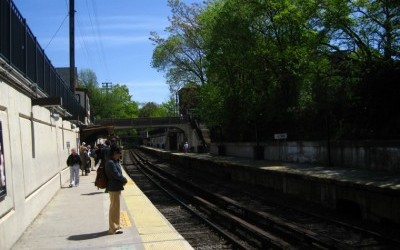The repair of a staircase at the Great Neck Long Island Rail Road station wasted more $160,000 due to lax supervision and an unproductive crew, according to a report from the Office of the MTA Inspector General.
The project, which the report estimates should have taken two and a half months to complete and cost under $100,000, instead took six months at a price tag of $261,000. The repairs lost 660 working hours due to late arrivals and early quitting times by the crew.
Despite the critical report, MTA Inspector General Barry Kluger praised the LIRR’s response in a statement.
“The railroad accepted all our recommendations, noted that it had already implemented many of them, and reported to us that it has taken proactive steps to change the way in which these types of projects are managed,” said Kluger. “We are encouraged by LIRR’s response, but will monitor its implementation of our recommendations to ensure that improvements in productivity, managerial effectiveness and cost efficiency are realized.”
Poor supervision, low expectations of workers and the absence of a project schedule or budget to guide the project were the chief causes of the waste, according to the report.
Maintenance projects in Manhasset and Deer Park were beset by similar issues, wrote the office of inspector general. Some 13 percent of the Manhasset crew’s labor hours were lost to tardiness and early exits, and a Deer Park project was cited for wasted off-site hours.
Short work site hours were a persistent problem, according to the report.
Using vehicle monitoring data, the inspector general’s office concluded that, on average, crews arrived 45 minutes later and left 34 minutes earlier than expected.
The Great Neck crew also sometimes received time-and-a-half pay for working through lunch, according to the report, despite statements from LIRR management that there are rarely valid reasons for the practice.
The inspector general’s office based their report on data from the MTA’s Automatic Vehicle Location Monitoring system, which tracks work vehicles. The inspector general’s office also observed work sites and interviewed supervisors.
The report recommends a list of steps for LIRR management to prevent waste, including clearer expectation and stricter enforcement of work hours, the use of the MTA’s vehicle monitoring system, the development of budgets and schedules for maintenance projects and the writing of a working-through-lunch policy.
The LIRR told the inspector general’s office that it accepted all the report’s recommendations in a Sept. 4 letter, and that it had already taken “proactive steps” to address their concerns.



